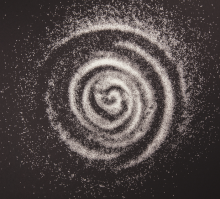It's All the Same Down There...

The other day I heard a hilarious stand-up comedy routine by Daily Show correspondent, Roy Wood Jr. He did a bit about blood sugar.
It went like this: He said he’d rather be addicted to some nefarious street drug than be addicted to sugar because at least the drug is just one thing. Sugar, on the other hand, is the end byproduct of so many other foods, that we never really know what’s considered sugar and what isn’t.
Tell someone you had waffles for breakfast, he went on, and they’ll screech, “No! You can’t do that! That gets down in your stomach and turns to sugar down there!”
Tell them you had pasta for dinner, same thing: “Oh, man, you can’t DO that. That gets in your body and turns to sugar down there!”
It’s funny…because it’s true.
Avoiding sugar seems straightforward until you realize how foods that aren’t labeled “sugar” can act like sugar in the body. Yes, you may get slightly more fiber with certain breads than you do with a dessert – and you’ll get more phytonutrients from fructose-rich fruits than you will from a candy bar – but, from a blood sugar perspective, your body can’t tell the difference between the two.
It all turns to sugar in your body, especially eaten alone or with little else. Without the presence of quality fat and protein to mitigate an onslaught of insulin, it all raises your blood sugar and has the potential to wreak havoc on your hormones and overall health.
He was also right about the addictive properties of sugar. Evidence suggests that sugar may activate similar reward pathways in the brain as other drugs. (And to be hyperclear, he was joking about wanting to be addicted to another drug. NO ONE is advocating that.)
Are you struggling to give up sugar? Have you been diagnosed with pre-diabetes, diabetes, or PCOS, a hormonal condition that’s intricately tied to high blood sugar and insulin resistance?
Are you diagnosis-free but you regularly get hangry (hungry + angry) between meals?
Do you just want to dramatically improve your overall health?
The good news is that you don’t have to give up sugar for good. Knowing a few key things can help you eat less of the sweet stuff.
Here’s how you can have your cake and eat it, too.
If you eat bread, read labels carefully and look for a few key things. Whole wheat bread can be as high-glycemic as white bread because it’s made with pulverized grains instead of whole or cracked grains, notes Dr. Andrew Weil. Instead, look for bread that’s full of seeds and preferably sprouted grains and has at least 4 or 5 grams of fiber per slice. The more fiber, the lower the blood sugar spike. (Plus, fiber in general is great for you.)
Avoid gluten, too.
If you’re willing to order your bread online, this is a great brand made in Portland, Oregon. In fact, it’s so good, Jill wrote a blog post about it.
Remember that “healthy” energy bars really…aren’t. Bars that are marketed as healthier alternatives are often just candy bars in disguise. If you look at the grams of sugar on the package, they can be as much – and sometimes more – than other forms of sugar. Some of them also contain allergens, like soy. Read labels very carefully, or better yet, skip bars altogether and opt for grass-fed beef jerky or nuts, seeds, or squares of very dark chocolate.
Dried fruit is a sugar bomb. Dried fruit spikes blood sugar much more than the real, hydrated thing because whole fruits still have all their fiber. When you crave fruit, eat it as nature intended!
Replace, replace, replace. It can be difficult to give up our favorite sweet treats, especially when they do double duty as comfort foods. (Until I was 36-years-old, my entire emotional life was propped up by chocolate chip cookie dough and apple crisp.) When transitioning away from sugary foods, I always recommend finding a good replacement. What works will be different for everyone, but I found that complex spices (like chai tea) and creamy textures (like almond butter and tahini) helped me forgo my favorite treats.
Add comment